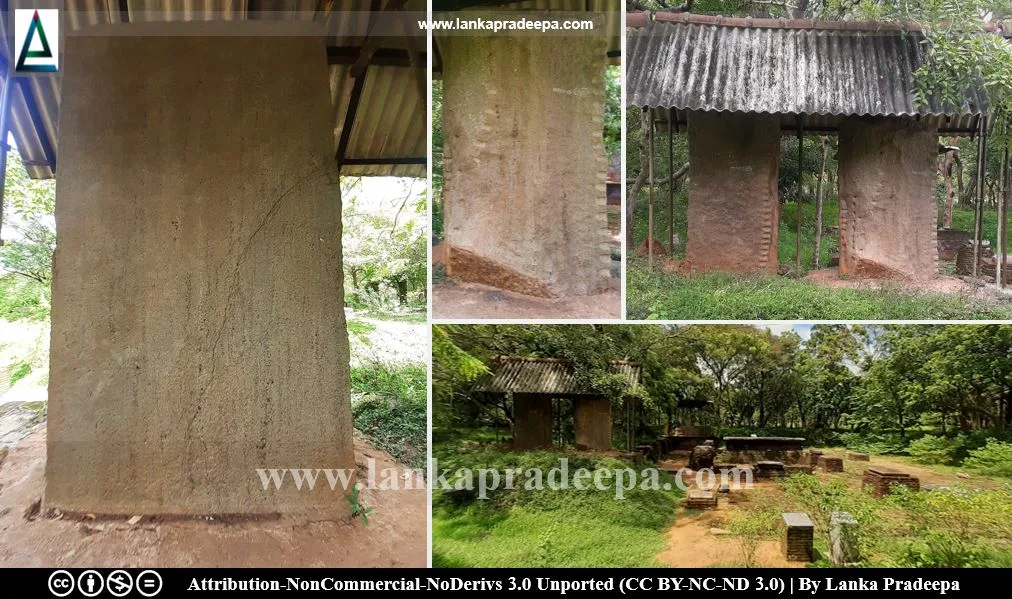
Abhayagiri Slab Inscription of King Mahinda IV is found erected in the premises of Bodhigharaya III of Abhayagiri Monastery in Anuradhapura District, Sri Lanka. The Abhayagiri Slab Inscription of King Kassapa V (914-923 A.D.) can also be seen beside this inscription.
The slab
The rectangular slab is about 6.5 ft. high and 4 ft. 3 inches wide (Ranawella, 2004). The inscription is inscribed in 55 lines of writing, each within a ruled space (Ranawella, 2004; Wickremasinghe, 1912).
Content
The language and the script of the record are Sinhala of the 10th century A.D. (Ranawella, 2004). It has been engraved in the 8th regnal year of a king styled Sirisangbo Abha, the son of a king who bore the same throne name and of an anointed Chief Queen named Deva (Ranawella, 2004). Scholars have identified him as King Mahinda IV [(956-972 A.D.) Ranawella, 2004; Wickremasinghe, 1912].
The purport of the record was to give an account of the Abhayagiri Viharaya and the religious monuments which the king had built and restored as well as a general survey of the charitable works he had performed during his reign (Ranawella, 2004). The content of this record agrees with the facts about Mahinda IV mentioned in chronicles (Ranawella, 2004; Wickremasinghe, 1912).
The Abhayagiri Slab Inscription of Mahinda IV
Reign: Mahinda IV (956-972 A.D.) Period: 10th century A.D.
Script: Medieval Sinhala Language: Medieval Sinhala
Script: Medieval Sinhala Language: Medieval Sinhala
Content: The inscription begins with a eulogy of the king and then there is a description of the Abhayagiri Viharaya and the chief incumbents residing there. Details are also given of the buildings constructed around Abhayagiriya and of the various repair works undertaken at places such as Isurumuniya, Ratnaprasada, Ruwanweliseya, Mirisawetiya, Sihigirimahaseya, Mahapali Alms-Hall, the relic house, the Mehenawara and the hospital. The record further mentions that a copy of the Dhammacakka Pavattana Sutta was taken throughout the city on the back of the royal elephant with great veneration and offerings were made as well.
Reference: The information board at the site by the Department of Archaeology and the Ministry of National Heritage.
Reference: The information board at the site by the Department of Archaeology and the Ministry of National Heritage.
References
1) Ranawella, G.S., 2004. Inscription of Ceylon. Volume V, Part II. Department of Archaeology. pp.245-252.
2) Wickremasinghe, D.M.D.Z., 1912. Epigraphia Zeylanica: Being lithic and other inscription of Ceylon (Vol. I). London. Archaeological Survey of Ceylon. pp.213-229.
Location Map
This page was last updated on 31 January 2022
For a complete tourist map follow this link: Lankapradeepa Tourist Map
For a complete tourist map follow this link: Lankapradeepa Tourist Map

